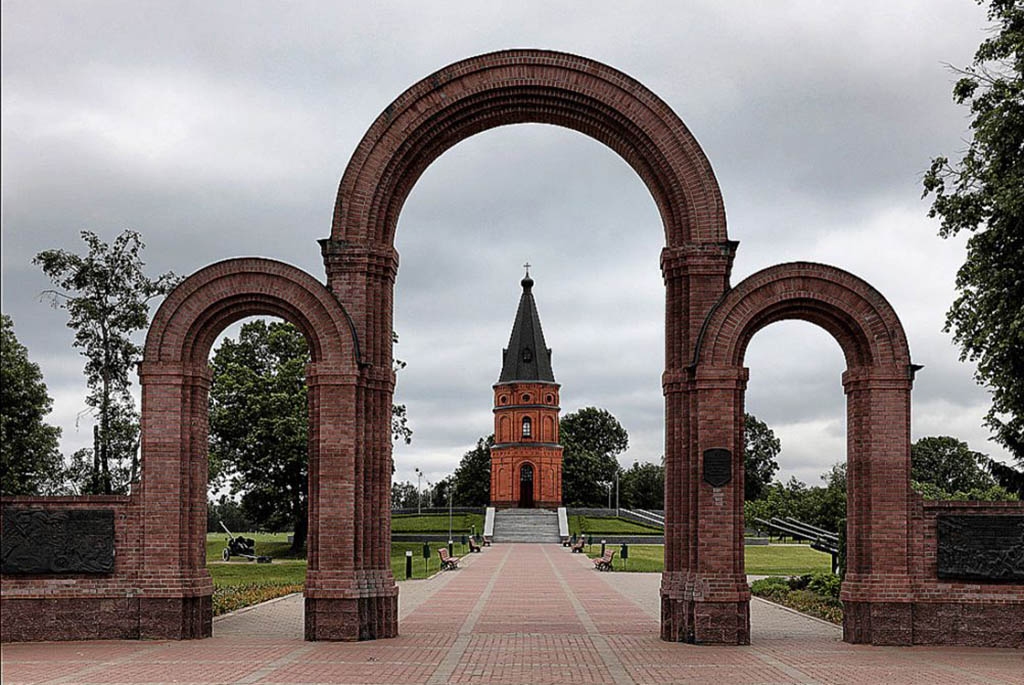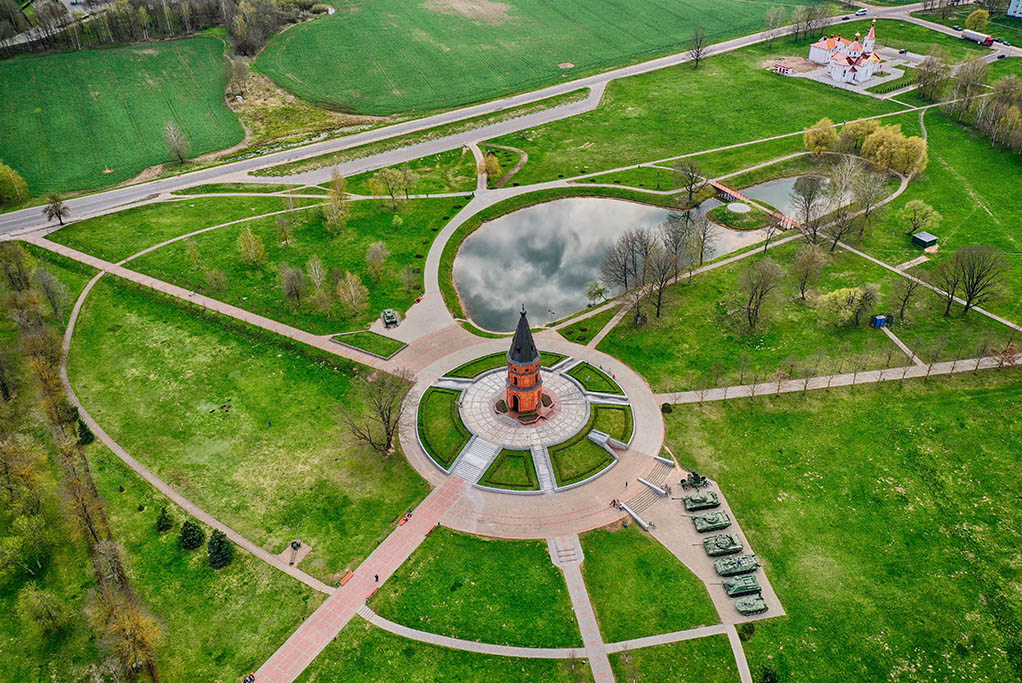At the beginning of the war, a strategic defensive line ran near the village of Buynichi. German forces planned to quickly seize Mogilev. They sent tanks, infantry, and artillery towards the city, supported by air strikes. The defense was long and exhausting. The Germans managed to break through, but a timely counterattack drove the fascists from their occupied positions. Numerical and technical superiority was on the enemy's side, so over time, the weakened Soviet soldiers were forced to retreat. But the precious days of defense allowed the Soviet army to gain time and prepare for the defense of Moscow and subsequent battles that turned the tide of the war. To honor the memory of the Homeland defenders, at the site of former battles, the Memorial Complex Buynichskoe Field was opened in the spring of 1995, which became a symbol of the heroism of Soviet soldiers.
What is the Memorial Complex Buynichskoe Field?
The entrance to the monument area is designed in the form of arches. Adjacent to them are walls decorated with bas-reliefs, which depict information about the city's defense. The compositional center of the memorial is a 27-meter-high brick Orthodox chapel. Inside its walls are memorial plaques containing the names of the fallen city defenders. At the center of the structure is a Foucault pendulum, the continuous movement of which symbolizes eternal memory of the war heroes. Below the chapel is a crypt, which is used for the reburial of the remains of Soviet soldiers found on the battlefields of the Mogilev region.
Well-kept alleys branch out in different directions from the chapel. One of them leads to an artificial body of water, named the Lake of Tears. This man-made lake symbolizes the maternal tears shed over the horrific and unjust years of war.

On the territory of the Buynichskoe field, there are samples of military equipment from the times of the Great Patriotic War – howitzers, cannons, anti-aircraft guns, tanks, including an exclusive trophy – a restored German T-III tank, raised from the bottom of the Dnieper River. Visitors to the complex will also be able to see a part of a real anti-tank ditch.
The memorial is closely tied to the legacy of the famous Soviet poet and prose writer, K. Simonov. As a war correspondent, the writer witnessed those very battles of 1941. The heroism and selflessness of the defenders of Mogilev impressed Simonov, so the events that took place in the field near Buynichi were reflected in several of his works. The writer even wished that his ashes after death would be scattered over the Buynichskoe field. The writer's relatives fulfilled the request, and over time, a memorial sign dedicated to the writer was installed on the territory of the complex.

Today, the Memorial Complex Buynichskoe Field is an important historical site that preserves the memory of the tragic events in the history of Belarus and the feats of brave defenders. It is visited by schoolchildren as part of historical excursions, tourists interested in the theme of World War II, local residents who want to honor the memory of their ancestors and learn more about the military history of our country. Here, meetings with veterans, patriotic lessons for children, festive events dedicated to the anniversaries of the city's liberation and the celebration of Victory Day are held.
The memorial complex is located at the 6th kilometer of the Mogilev-Bobruisk highway. From the Mogilev railway station, you can get here by bus or minibus.


